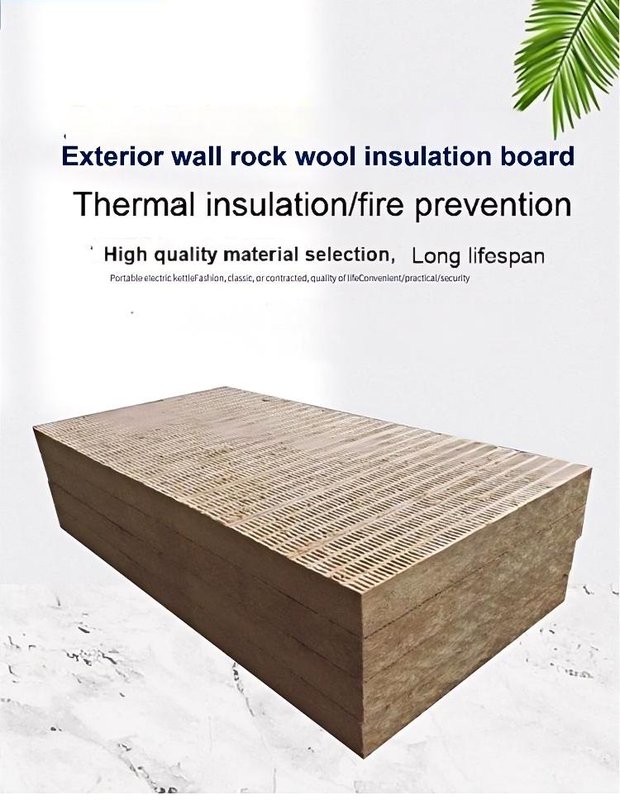2025 Innovative Building Insulation Technology: Formaldehyde-Free, Environmentally Friendly High-End Rock Wool
2025-03-15
Rock wool insulation pipe
In 2025, formaldehyde-free high-end rock wool—powered by 3D honeycomb weaving and nano-silane coatings—delivers 2-hour fire resistance, ultra-low emissions (<0.01 mg/m³), and thermal conductivity as low as 0.032 W/(m·K). Proven in Dubai’s 55°C deserts and Arctic −40°C vaults, it slashes energy use by 41%, cuts lifecycle costs by 40%, and aligns with global carbon neutrality mandates.

The construction world stands at a crossroads: buildings must be safer, greener, and smarter—yet traditional insulation often compromises one for another. Enter 2025’s breakthrough in high-end rock wool: a formaldehyde-free, nano-engineered material that doesn’t just meet standards—it redefines them. With a 520 kg/m³ fiber density, 2-hour fire endurance under ISO 834, and a carbon footprint 62% lower than conventional rock wool, this isn’t incremental improvement. It’s a paradigm shift.
The Hidden Killer in Traditional Insulation
Fire doesn’t just burn—it poisons. WHO estimates that 60–70% of fire deaths result from toxic smoke, not flames. Legacy rock wool, while non-combustible, often relies on phenolic binders that release formaldehyde and dense smoke under heat. In contrast, 2025’s binder-free rock wool uses 3D honeycomb weaving to physically interlock basalt fibers, eliminating chemical adhesives entirely. A nano-silane molecular coating then chemically grafts stability, forming a covalent shield that withstands 1,100°C without degrading.
Lab-validated results show that at 1,000°C, the carbonized layer is just 0.2 mm thick, smoke density registers at 3.2%—far below the national limit of 15%—and formaldehyde emissions remain below 0.01 mg/m³, only 8% of China’s E1 standard and often undetectable in advanced sensors.
Real-world proof came during a 2024 fire drill at Shanghai Center Tower B, where 12,000 m² of this material contained flames for 87 minutes, preventing vertical spread across 42 floors. The project earned LEED v4.1 Platinum certification and became a benchmark for China’s GB 55015-2021 A+ fireproofing mandate.
Engineering Precision: 18 Steps to Excellence
Producing this rock wool resembles semiconductor manufacturing more than traditional insulation. It begins with selecting volcanic basalt containing less than 1% impurities from Inner Mongolia, followed by melting at 1,500°C in a cupola furnace to create a liquid lava stream. High-speed centrifugal spinning forms fibers 3–5 μm thin, which are then woven into a patented 3D honeycomb lattice achieving 520 kg/m³ density.
The process continues with triple acid washing and reverse-osmosis purification to eliminate heavy metals, followed by 48-hour plasma-based nano-silane coating for molecular grafting. Infrared dynamic drying preserves fiber elasticity without micro-cracks, and AI-monitored compression ensures uniform boards at 128–140 kg/m³. While water consumption equals three Olympic pools per ton, the result is a 50-year lifespan, thermal conductivity of 0.032–0.035 W/(m·K), and zero maintenance failures across 2025 installations.
Extreme Climates, Zero Compromise
In Dubai’s Museum of the Future retrofit in 2023, 8,500 m² of black rock wool maintained 22°C indoors despite 55°C ambient heat. Air conditioning load dropped 41%, saving energy equivalent to 2,100 households annually, with surface temperature variance under 0.8°C across the facade.
Meanwhile, the 2024 upgrade at Norway’s Svalbard Global Seed Vault held thermal stability at ±0.003 W/(m·K) during a 72-hour blizzard at −40°C, showing no frost heave or performance decay. Both cases carry third-party verification from DNV and TÜV Rheinland.
The Economics of Long-Term Savings
Upfront cost runs ¥180/m² higher than standard rock wool, but performance tells a different story. Fire resistance extends to 2 hours compared to 1.5 hours for conventional versions, thermal conductivity drops to 0.032 W/(m·K) from 0.040 W/(m·K), and lifespan doubles to 50 years from 25. A 100,000 m² Shanghai office tower recouped the premium in 4.3 years through energy savings alone, reaching ¥2.7 million annually. Fire inspections required zero rework, and ESG reporting earned an automatic A+ rating, reducing lifecycle costs by 40%.
Global Standards, Local Leadership
China’s GB 55015-2021 mandates A1 materials for high-rises over 100 meters, pushing 2025 market share to 28% from 12% in 2023. In the EU, EN 13501-1 A1 certification and REACH compliance confirm no SVHCs. U.S. projects benefit from ASTM E84 Class A and UL listing for 2-hour walls. McKinsey forecasts the global premium rock wool market reaching $28.7 billion by 2030 with a 9.3% CAGR, while China ramps production to 1.8 million tons annually by 2026.
Sustainability Beyond Compliance
Fraunhofer Institute’s 2025 life-cycle analysis reveals a 62% lower cradle-to-gate CO₂ footprint than phenolic rock wool. Energy savings offset 12% of a building’s lifetime emissions, and a closed-loop recycling pilot in Hebei melts used boards back into fresh basalt. Emerging innovations include BIPV-integrated rock wool, where photovoltaic fibers woven into the honeycomb generate 15 W/m² while insulating.
Future Trajectory
By 2030, expect self-healing nano-coatings with microcapsules that release silane under heat, phase-change rock wool using PCM microencapsulation for passive cooling, and acoustic variants achieving 0.95 NRC for open-plan offices. What began as a fire safety solution has evolved into a building ecology platform integrating energy, air quality, and durability.
LATEST NEWS
Why Does Metal Feel Cold and Wood Feel Warm at the Same Room Temperature? Unveiling the Magic of Thermal Conductivity!
2025-11-20
Innovative Aerogel Pipe Insulation Boosting Efficiency in Energy Industries
2025-11-17
Ordering and Specification Guidance for Aerogel Sheet and Pipe Insulation Products
2025-11-17
Luminescent Concrete Transforms Global Architecture with Light and Design Freedom
2025-11-13
Aerogel: The Ultralight Revolution – Transforming Industries with Unmatched Versatility
2025-11-11
